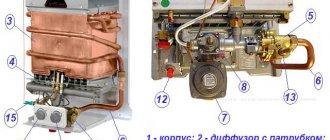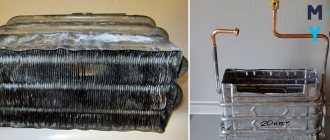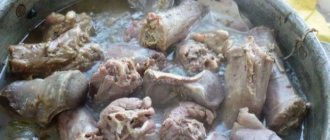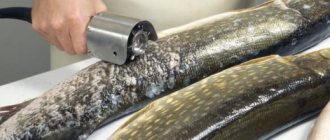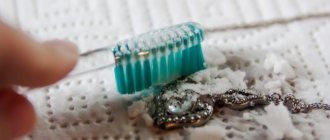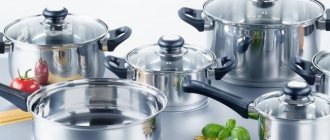According to researchers, the average woman spends about 18 years of her life in the kitchen. The most important cooking tool is a gas stove. To prevent equipment from malfunctioning, every housewife needs to know the appropriate maintenance rules.
It is important not to let the pressure, saturation or strength of the flame change. To do this, there are many recommendations regarding proper care of the stove. Do you want to know all the possible kitchen stove problems and how to deal with them? Then this article is for you!
Proper care of household appliances will ensure a long service life.
Problems and causes of gas stove malfunction
The most common problem affecting changes in flame pressure is contamination of the burners. During the cooking process, small particles of food and liquids accumulate in the openings of the dividers. A much worse situation is clogged nozzles, which ultimately leads to inactivity of the burners.
Also, one of the factors causing difficulties may be the incorrect selection of detergents for the stove. For example, powdered products are not completely removed from the burners and end up inside the jets.
Before checking a gas stove, it should be disconnected from the gas supply.
Therefore, it is worth knowing how to properly care for a gas stove. Do not forget that gas supply pressure also affects the performance of the stove. But a qualified specialist will help check for this problem. Remember, doing amateur activities without any knowledge can harm your life.
During maintenance of gas stoves, water heaters and floor-standing boilers, the gas supply is stopped. Residents of apartment buildings are informed about this in advance.
Why do you need to clean them?
- First, be sure to turn on the hood and open the windows in the kitchen. This measure is necessary because when fat burns, a rather unpleasant odor will be released.
- Light the burner and place the grate over the fire.
- Change its position periodically so that the entire surface is heated.
- Continue roasting until the fat is completely burnt. You can detect this when you see that the soot will separate from the surface of the metal.
- Now leave the item until it cools completely, then wipe with a damp cloth, removing all remaining dirt.
An open spiral electric burner, as in the photo, is not entirely easy to clean. The reason for this is the design of the heating element, under which it is difficult to insert a brush, washcloth or rag. Nevertheless, it needs to be washed and cleaned at least as often as a gas burner, because in addition to food residues, escaped broths and flying fat, burnt atmospheric dust gets into the pan.
Cleaning time: proper removal of contaminants from the burner elements
There are many methods for cleaning a kitchen stove. Each housewife individually selects the method that is closest to her. Therefore, there is no single recipe for effectively removing food residues, soot and grease.
To keep your stove sparkling clean, you don't have to use expensive chemicals.
Before you begin to remove contaminants from the burners using any method, it is necessary to shut off the gas access to the stove so that a leak does not occur in any case. If you are a user of an electric stove, you should limit the power supply. Next, to protect against burns, check that the oven is cool. Then remove the surface grille.
Many people do not like ready-made chemical solutions because of their aggressive effects and the high risk of allergic reactions. Instead, it is better to use traditional methods that are safe and often remove dirt and grease much more effectively.
It is important to understand the structure of the burner. Its components are a gas burner cover, a divider and nozzles with jets. Contamination must be thoroughly removed from all elements. The next step is to remove the burner cover and disconnect the flame divider. The small openings of the divider should be cleaned with a thin and sharp object, such as a needle or a piece of wire. You can also use a toothbrush. Now you can move on to the main part.
A gas stove has special burners and electric ignition, which also accumulate a lot of grease and dirt.
First way:
- A small container should be filled with hot water.
- Mix water with dishwashing detergent in a 10:1 ratio.
- Depending on the intensity of contamination, soak all burner parts in the resulting solution for 15 to 90 minutes.
- After waiting the required time, you need to put on gloves for further work. These gloves can be purchased at any hardware store or supermarket.
- Using a dish sponge, specifically its hard part, you should clean all components.
- To remove any remaining soap solution, rinse everything with running water.
- Wipe dry or lay out to dry.
You should not use steel wool, as they can seriously damage the surface; in addition to a sponge, it is best to use a toothbrush or cotton swabs for the most difficult to reach areas, such as handles.
Advice. To maintain its original appearance, do not use metal brushes, which can perfectly clean all dirt, but at the same time ruin the appearance of the burner parts.
If it so happens that the burners have not been cleaned for a long time, then there is a more effective and powerful method for this.
After soaking, it will be much easier to remove the softened dirt.
Second way:
- Perform the above steps for disassembling the parts.
- Add a small amount of nine percent vinegar to a container of water. The mixing ratio is as follows: two parts water to one part vinegar. The resulting solution should be brought to a boil.
- Place the components in the hot solution for about half an hour.
- Be sure to wear rubber gloves to protect the skin of your hands from the adverse effects of the cleaning solution.
- Rub with a regular sponge to remove dirt.
- After all manipulations, rinse all elements under running water to remove any remaining toxic substance.
The solution should remain on the stove for 30-60 minutes, after which it is washed off with a damp sponge.
Important! Vinegar is a liquid with a pungent odor, so it is necessary to ensure a well-ventilated area before proceeding.
Don’t forget about another easy but quite effective option for cleaning burners.
If a regular sponge doesn't do the job, use a toothbrush.
The third method is to use the well-known universal assistant in everyday matters - baking soda. The algorithm of actions is almost the same as in the previous options.
- Dissolve one part baking soda in two parts water.
- Next, put the contaminated items into the liquid.
- Wait about half an hour. During this time, the “assistant” will have time to properly separate the dirt from the parts.
- After this, remove the residue manually using a sponge cloth.
- And finally rinse with water.
Each area to be cleaned must be treated with a damp sponge on which soda has been applied; usually even old stains are removed the first time, but if we are talking about hard-to-reach places, you will have to use cotton swabs soaked in a solution of ammonia.
Adviсe
A few tips from experienced housewives will make the difficult process of cleaning carbon deposits from gas grills easier:
- Fresh traces of soot can be easily removed with lemon juice. It is enough to wipe the rods with a slice of fresh citrus and there will be no trace of greasy stains left.
- The soaking time in the soap solution should not exceed six hours. Prolonged contact with water destroys the protective layer of metal rods.
- Liquid for washing car engines is an effective tool in the fight against carbon deposits on cast iron grates.
Life hack: using cookware with high sides helps keep the grates and work surface of the gas stove clean.
Methods and means for cleaning various surfaces from carbon deposits are presented in this section.
Cast iron
The stove is one of the most difficult to maintain devices located in the kitchen, especially if cooking is carried out on gas. After all, in order to clean a gas stove, it is necessary to remove dirt not only from the hob, but also from the cast iron grate, burners and handles.
Expert opinion
Ksenia Diyanova, expert on beauty, purity, harmony
Ask me any questions, I will be happy to answer!
When using electric stoves with closed burners, housewives have to face many maintenance difficulties, primarily because the discs are not removable. When heated, such metal is imperceptibly destroyed, and its microparticles tightly stick to the burners. Basic stages of cleaning Ask me all your questions, I will be happy to answer!
“Ambulance” for deep-rooted carbon deposits and grease
On the shelves of modern household chemical stores you can see many different products for the professional care of kitchen stoves. But, as many years of practice have shown, there is no point in spending money on jars of emulsions, gels, and powders. There are proven folk methods that require a minimum of time and financial resources.
First you need to collect food residues and simple dirt, which are wiped off using a dry sponge with a hard surface or a rough cloth.
Even in the fight against such a serious problem as soot and grease that has accumulated over a long period of time, there is every chance of coping without special chemicals.
Note! Before you start work, follow all safety requirements: disconnect the stove from the gas or electricity supply. Also, in addition to the grate, remove the burners and its components.
You should always promptly clean the burners of a gas stove from carbon deposits; they can be removed quite easily, they can be disassembled and all parts can be washed separately.
The following reagents are really effective in removing carbon deposits and grease:
- soda;
- lemon acid;
- mustard powder;
- refined gasoline;
- ammonia;
- silicate glue.
Since the burners are made of aluminum, they must be cleaned with chlorine- and acid-free products and should not be soaked.
Baking soda
Once again, the essential soda comes to the rescue. Only in this case will it be necessary to create a known chemical reaction from school days.
- First, you should treat the “damaged” surface with vinegar and give time for the liquid to act on its own. Five minutes will be enough for this procedure.
- Then you need to evenly pour baking soda on top of the vinegar. These two substances will react instantly. If you hear a quiet hiss, then the action of the acid and alkali is successful. Just there is no need to rush to wipe away traces of burning.
- You should wait 20-25 minutes until the substances react with each other.
- After the specified time, gently wipe the area with a dry cloth or kitchen sponge.
Some housewives even rub the paste in a little, but this must be done with extreme caution.
Lemon acid
Lemon juice will easily dissolve greasy marks.
- Take a slice of lemon and squeeze it onto the desired areas.
- Leave the product to work for about 15-20 minutes.
- Then rub the “former” dirt a little and remove completely with a damp cloth.
When using lemon, you get a pleasant smell as a bonus.
Mustard powder
If the first method is universal, then the second is suitable mainly for traces of fat. Mustard powder easily and effectively combats old oil stains.
- You just need to apply the product to the dirty area.
- Then set the timer for 20 minutes.
- At the end, make an effort to wipe off the dirt and rinse with cool water.
Mustard powder dissolves fat perfectly, so it has been used by housewives for a long time.
Refined gasoline
The product is not inferior in effectiveness to previous substances. To a large extent, with strong traces of fat, this substance can serve as a lifesaver.
The product deserves the name “stain remover”, because in a matter of minutes it will help clean without harming the surface. But the only drawback is the pungent odor. Therefore, it is worth using this method with open windows.
- You need to apply the product to the area affected by burnt marks or fat.
- Wait about 10 minutes.
- Ready. Wipe with a dry cloth to remove any remaining gasoline.
It is necessary to moisten the sponge with the product and, centimeter by centimeter, very carefully treat all parts of the grille.
Ammonia
Ammonia is simple but effective to use. Especially with very old stains. The advantage is the smell, which disappears literally in seconds. The algorithm of actions is as follows.
- Apply ammonia with a soft brush.
- Rub lightly onto the contaminated area.
- Leave the substance to act for about 15-20 minutes.
- At the end, you need to wipe the area with a damp dishwashing sponge.
The duration of the procedure is determined individually in each case - you need to look at the condition of the dirt and how easily they are separated from the grate.
Silicate glue
This product is super effective on long-dried and forgotten dirty marks. The necessary product is very simple to prepare.
- A tablespoon of silicate glue must be added to 300 milliliters of water.
- Dissolve a small amount of grated laundry soap in the resulting liquid.
- Add three tablespoons of baking soda there.
- All ingredients should be mixed well and applied to a burnt or greasy stain.
- Leave for several hours.
- Then rinse off with a damp cloth or sponge.
Tip: laundry soap can be replaced with a teaspoon of any washing powder.
The stove will shine and literally creak. Don't forget to wear gloves!
Household chemicals and folk remedies
You can clean different types of burners mechanically using household chemicals and folk remedies. The latter can be easily prepared from available substances, for example, from:
- table vinegar;
- soda ash or baking soda;
- ammonia;
- hydrogen peroxide;
- washing powder;
- laundry soap.
If we talk about purchased household chemicals, it should be noted that substances containing chlorine and concentrated alkalis cannot be used for washing aluminum parts.
Recently, a product called melamine sponge has become increasingly popular. This substance does not require additional detergents, but at the same time it perfectly removes the most persistent stains from any surfaces. Melamine sponge, despite its abrasive structure and abrasion, can be safely used on glass and ceramic coatings. After washing with this truly magical product, there are no streaks left. Among other things, research by a group of scientists has proven that the melamine sponge kills bacteria, that is, it has a moderate bactericidal property.
Removing contaminants from injectors
It is important for every attentive housewife to know what a nozzle is. This is a small element of the gas burner, which is responsible for the gas supply itself. Therefore, if, while using a kitchen stove, problems arise related to the intensity of the flame or the disappearance of gas altogether, you should pay attention to the nozzle. Apparently it is clogged.
Dirty gas stove nozzles can cause the burners to burn poorly.
Please note that you should call a professional before attempting element cleansing methods yourself. A gas fitter will look at the condition of the unit and prove there is a problem that requires cleaning.
If after cleaning the problem remains, you should call a gas technician who will check the gas supply. Do not troubleshoot the stove yourself!
If the problem is that the injector is clogged, you should adhere to the following scheme.
- First you need to remove the burner from the gas stove. If there is a need, then wash according to the above instructions.
- The next step is to find a small hole.
- For cleaning, you can use a needle, a paper clip, having first straightened it, or a piece of wire.
- We insert the tool into the nozzle and perform several rotational movements.
- To make sure that the component is cleaned, you should repeat the movements a couple more times.
- As a result, install everything in its place and open the gas line.
It is not recommended to use powdered products to clean the burners of a gas stove; they can clog the flame divider holes.l
Important:
- Do not check gas flow directly through the nozzle. Before applying gas, it is necessary to restore the burner to its original form.
- Never allow water to enter the nozzle.
Use toothbrushes to clean the narrow tubes that direct gas to the divider cap.
Cleaning steps
Before you begin cleaning, it is important to follow a number of necessary recommendations. Completing all stages guarantees the highest quality cleaning:
- be sure to close the gas supply valve;
- wait until the stove has completely cooled down, as you risk getting burned;
- It is advisable to open the window if the weather permits;
- remove all foreign objects from the stove, including the grate;
- remove the burners (they usually consist of two parts: the lid and, in fact, the bowl);
- After finishing cleaning, dry the elements well, return them to their place and check the gas combustion.
If, after all the measures taken, you notice that the gas is burning incorrectly, immediately find out the cause of the malfunction:
- burns crookedly - the burner is installed incorrectly or the structure has moved out;
- If the gas is yellow or orange, there is still moisture in the holes.
Useful tips
- To ensure that the gas stove does not cause difficulties when cleaning it, it is necessary to carry out maintenance procedures regularly.
- Various powders are strictly prohibited for washing gas appliances. Because small particles can get clogged in the nozzle holes, which will lead to damage to the stove.
- If the actions taken on the gas stove do not lead to results, you should call a gas fitter for a routine diagnosis of the kitchen stove.
- Call a gas appliance specialist at least once a year. Only a service technician for such installations will be able to inspect the condition of the device.
- Do not be indifferent to safety regulations. Timely shutting off the gas and ventilating the room where the gas stove is located can save your life
.
In the process of regular maintenance of the stove surface, do not forget about timely cleaning of the burners. Contamination of the stabilizer parts can lead to malfunctions of the device.
Thus, by following all the above rules and recommendations for caring for a gas or electric stove, you will be able to maintain excellent performance and impeccable appearance of the kitchen appliance for a long period.
Table vinegar
- Add ¼ cup of undiluted ammonia to the stained area.
- Cover each grate with a separate plastic bag and seal tightly.
- Let the ammonia do its work for a few hours or overnight. During this time, the stains are eliminated - the dirt is guaranteed to fall off the iron.
- Rinse off any residue and dry your gas stove.
All formulations are used in strict accordance with the instructions (available on the bottles of each product) and taking into account the type of coating.
Rules for using aluminum cookware
Every housewife can preserve the original appearance of kitchen utensils, protect them from deformation and serious contamination. To do this, follow the basic recommendations for the operation and care of aluminum products:
- Do not use dishes for pickling cucumbers, cabbage and other products. The acid reacts with the metal, which provokes the release of toxic substances that are hazardous to health.
- Aluminum utensils are not suitable for daily use due to rapid wear.
- Do not store leftover food in aluminum containers.
- Avoid prolonged exposure of metal to high temperatures. Use medium to low heat while cooking.
- For cleaning, do not use powder, sandpaper, or other abrasive tools.
Proper operation and proper care will help maintain the cleanliness and shine of aluminum products
Aluminum products are lightweight, multifunctional, and easy to use. With proper use and care, a kitchen utensil, sink or part will last a long time, fulfilling its main purpose.
